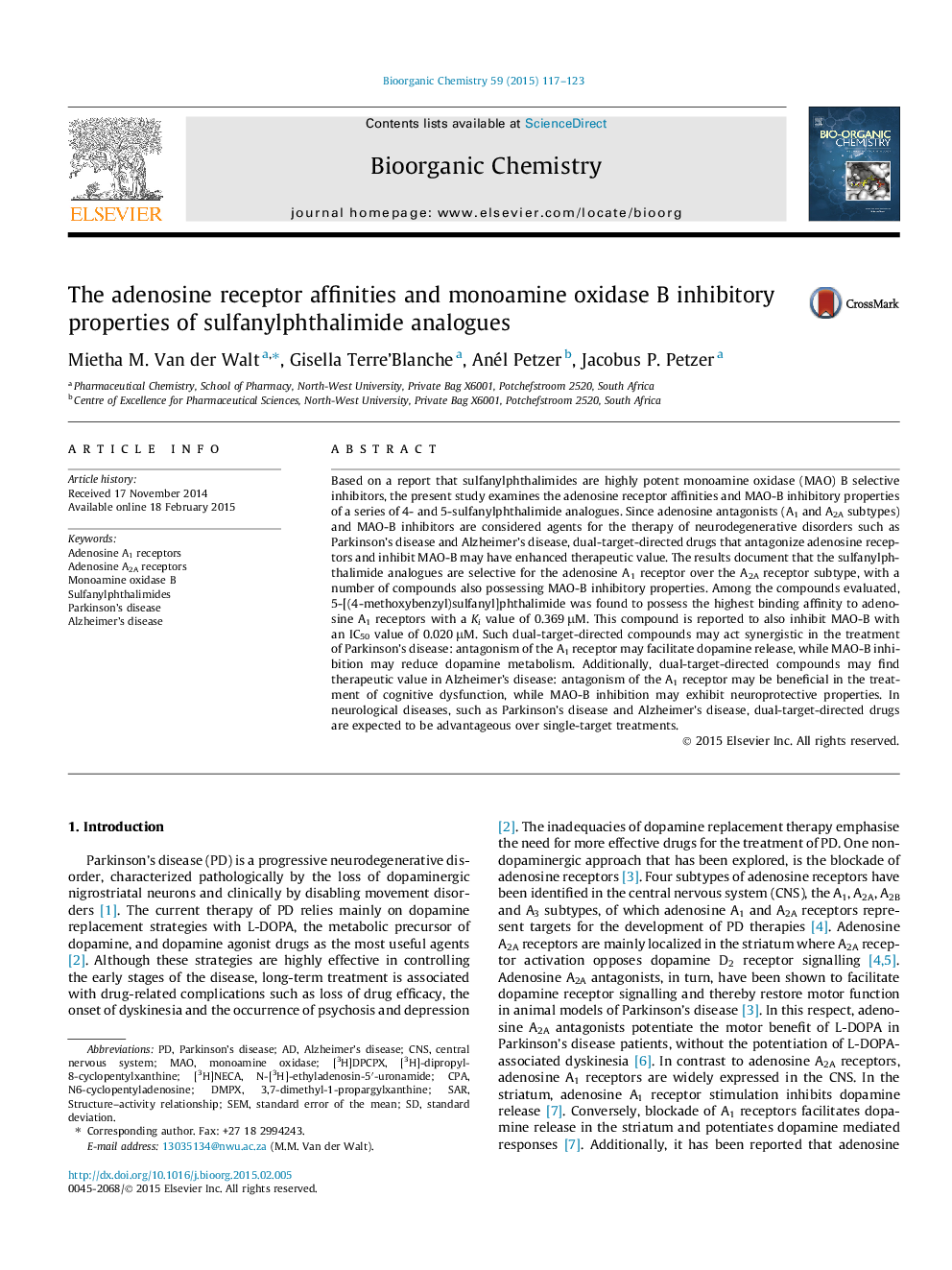| کد مقاله | کد نشریه | سال انتشار | مقاله انگلیسی | نسخه تمام متن |
|---|---|---|---|---|
| 1356033 | 1500455 | 2015 | 7 صفحه PDF | دانلود رایگان |

• Dual-target-directed compounds may act synergistic in neurological disorders.
• A1 and A2A antagonists are under development for Parkinson’s and Alzheimer’s disease.
• MAO-B inhibitors are considered agents for Parkinson’s disease therapy.
• Promising dual-target-directed compounds identified in this study.
• Further structural optimization of these compounds may yield improved activities.
Based on a report that sulfanylphthalimides are highly potent monoamine oxidase (MAO) B selective inhibitors, the present study examines the adenosine receptor affinities and MAO-B inhibitory properties of a series of 4- and 5-sulfanylphthalimide analogues. Since adenosine antagonists (A1 and A2A subtypes) and MAO-B inhibitors are considered agents for the therapy of neurodegenerative disorders such as Parkinson’s disease and Alzheimer’s disease, dual-target-directed drugs that antagonize adenosine receptors and inhibit MAO-B may have enhanced therapeutic value. The results document that the sulfanylphthalimide analogues are selective for the adenosine A1 receptor over the A2A receptor subtype, with a number of compounds also possessing MAO-B inhibitory properties. Among the compounds evaluated, 5-[(4-methoxybenzyl)sulfanyl]phthalimide was found to possess the highest binding affinity to adenosine A1 receptors with a Ki value of 0.369 μM. This compound is reported to also inhibit MAO-B with an IC50 value of 0.020 μM. Such dual-target-directed compounds may act synergistic in the treatment of Parkinson’s disease: antagonism of the A1 receptor may facilitate dopamine release, while MAO-B inhibition may reduce dopamine metabolism. Additionally, dual-target-directed compounds may find therapeutic value in Alzheimer’s disease: antagonism of the A1 receptor may be beneficial in the treatment of cognitive dysfunction, while MAO-B inhibition may exhibit neuroprotective properties. In neurological diseases, such as Parkinson’s disease and Alzheimer’s disease, dual-target-directed drugs are expected to be advantageous over single-target treatments.
Figure optionsDownload as PowerPoint slide
Journal: Bioorganic Chemistry - Volume 59, April 2015, Pages 117–123